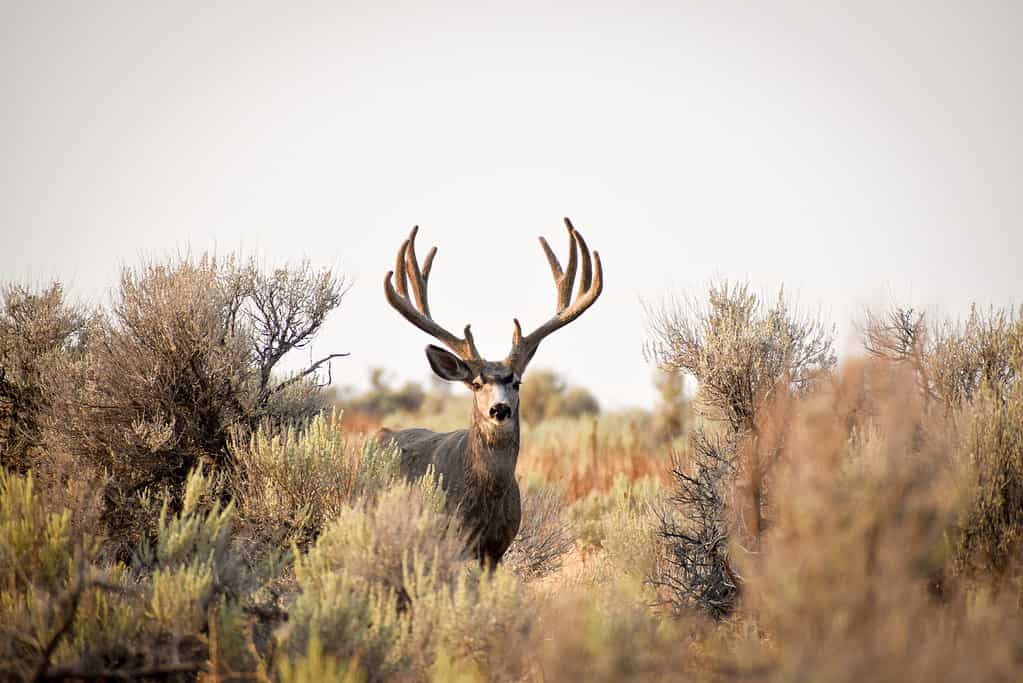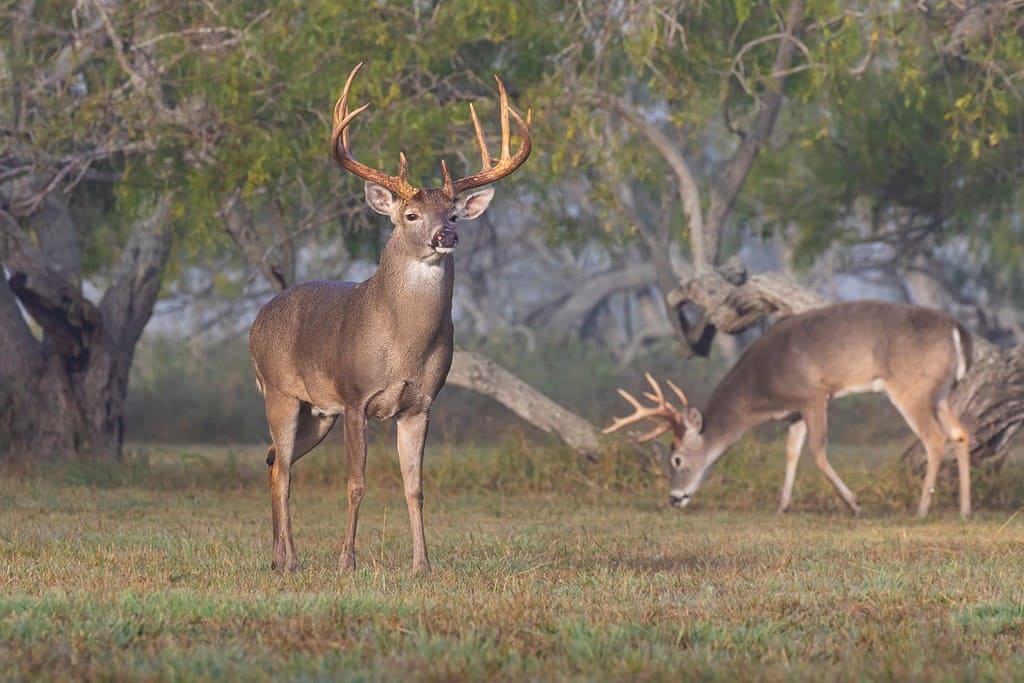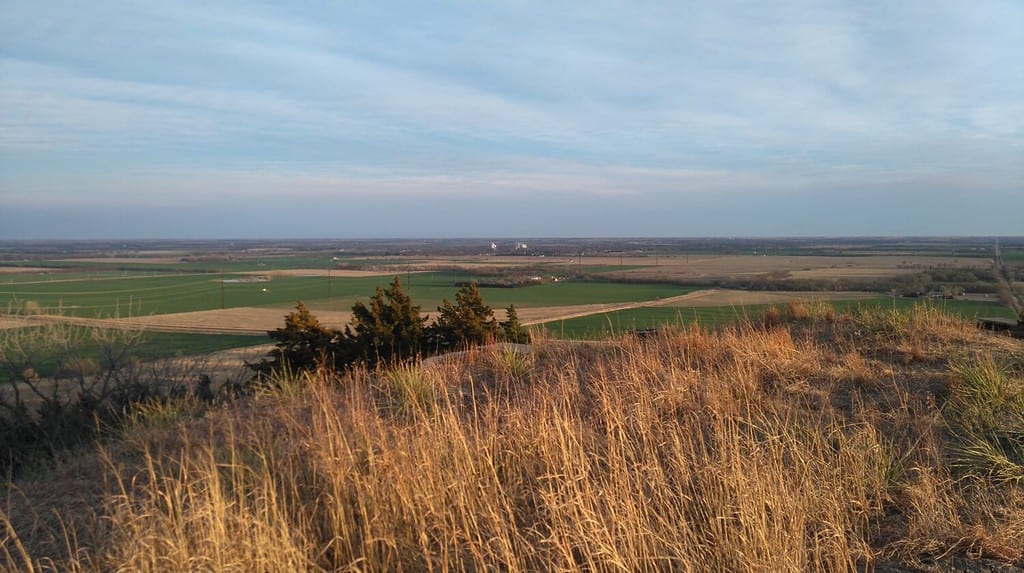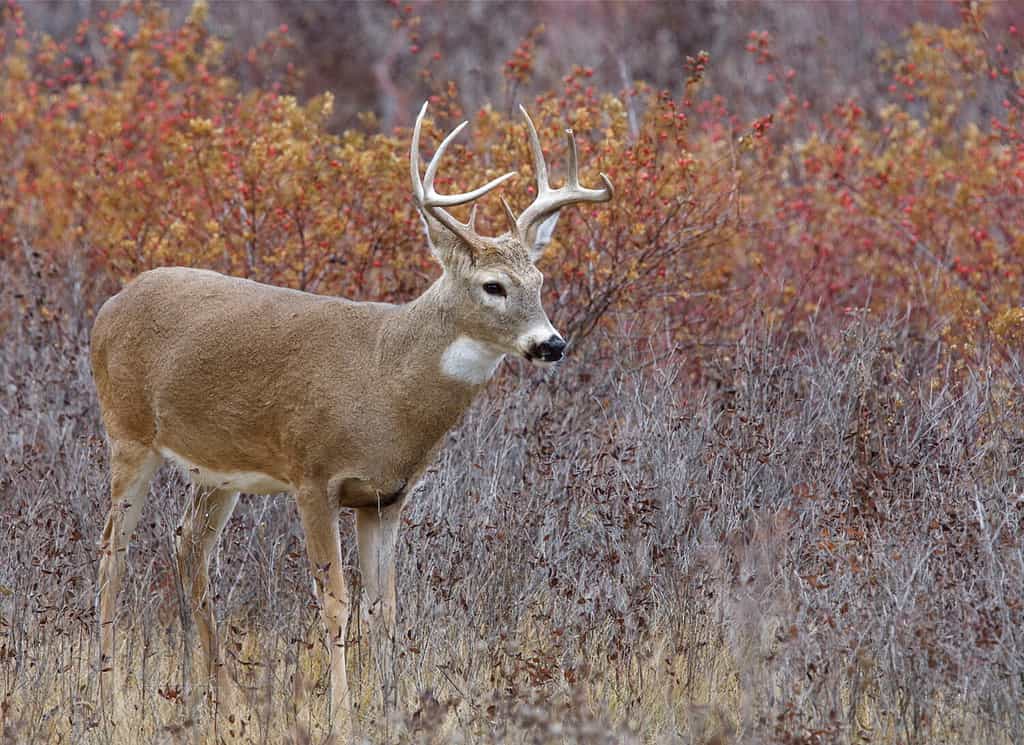Deer hunters may look forward to the upcoming hunting season all year long as a chance to get outside and spend time in nature. Others look forward to having a refrigerator full of venison for the winter. Some people do not realize that in certain areas, deer hunting can provide an important ecological service. In places where the deer population grows too large, a growing number of deer can throw the environment’s balance off and lead to other negative outcomes for the native plants and animals. Regardless of their motivation, deer hunters across the country likely have opinions about the best places to go to enjoy a good and satisfying hunt. Proud Kansans might argue that deer hunting in Kansas is the best in the country. What does the data have to say about that?
This article will cover the facts when it comes to deer hunting in Kansas. You will learn about the best places to hunt deer in Kansas, the quality of the deer, local access to public hunting land, and key information about deer hunting season and the weather conditions in Kansas. Let’s dive in to learn all about deer hunting in Kansas now!
Reasons Why Kansas Deer Hunting is Amazing

White-tailed deer are plentiful in Kansas.
©Tom Reichner/Shutterstock.com
First, hunters in Kansas will find the opportunity to hunt either white-tailed deer or mule deer. Second, they will get to hunt across a variety of landscape types. Third, hunters have the opportunity to hunt during a number of hunting seasons. Fourth, hunters can harvest both one white-tailed buck and one white-tailed doe.
These are just four of the qualities that make deer season a popular hunting time in Kansas and a great place for hunters searching for a trophy buck or a doe! Let’s go into these reasons why Kansas deer hunting is fantastic in greater detail.
Deer Species in Kansas

Sadly, the mule deer population in Kansas is declining and has been diminishing for the last 20 years. However, the white-tailed deer population is growing every year.
©Chad J Stokes/iStock via Getty Images
Two deer species thrive in the state of Kansas. These are the mule deer and the white-tailed deer. There are about 50,000 mule deer, which mainly live in the western third of Kansas. Unfortunately, the population of mule deer in Kansas has been declining for the last several decades. In contrast, white-tailed deer live across the state, and there are hundreds of thousands of them. The white-tailed deer population is expanding and this species is expanding across the state. Some estimates place the number of white-tailed deer in Kansas at well over 700,000.
Deer Quality

White-tailed deer inhabit a variety of landscapes.
©Danita Delimont/Shutterstock.com
Hunters in Kansas should be aware that scientists have detected diseases in Kansas deer, including chronic wasting disease and hoof disease.
Chronic Wasting Disease
However, hunters in Kansas should be aware of Chronic Wasting Disease (CWD). CWD is a neurological disease that impacts the nervous systems of deer as well as other cervid species such as elk and moose. This contagious disease causes damage to an animal’s brain, resulting in symptoms like strange behavior, weight loss, and increased salivation. However, most deer with CWD look completely normal to a hunter because the symptoms can take years to present.
Since first being CWD detected in Kansas in 2001, the number of positive cases has increased steadily. The disease is especially prevalent in western parts of Kansas. Hunters who harvest deer in an area where CWD has been detected should bone out the meat immediately to avoid contributing to the disease’s spread. Though there is a lack of evidence that CWD is transmissible to humans, experts still recommend not eating meat from an infected deer. Experts strongly recommend having deer tested for CWD before commercially processing the meat. If the deer tests positive, it is best to avoid consumption of any meat and dispose of it safely.
Hoof Disease
Scientists have also detected hoof disease in Kansas’ deer population. The sickness called “hoof disease” is the common name for Epizootic Hemorrhagic Disease, a viral illness that can cause deer hooves to look broken or cracked. Sadly, this disease is often fatal for deer. Generally, since there is no evidence to suggest that this disease is a risk for humans, hunters may harvest, process, and cook the meat safely.
Habitat Quality

The Kansas landscape includes farmland, woodlands, and hilly grassland.
©Haastrup/Shutterstock.com
Though Kansas has a reputation for being flat farmland, the state’s geography is actually fairly diverse and varied from the east to the west. White-tailed deer in particular have spent generations adapting well to Kansas’ landscape. Since Kansas has a varied deer habitat, deer in this state live in a range of habitats, including hilly grassland, forests, and flat fields. They live in the state’s natural woodlands, grassland areas, and agricultural communities. Kansas’ landscape includes natural woodlands, grassland areas, and agricultural communities, with the eastern third of the state having more forested areas and the western two-thirds having more flatlands. The highest density of deer in Kansas is in the eastern third of the state, where the animals thrive in woodland areas with some agricultural land.
Public Land in Kansas

The second largest lake in the state of Kansas, Tuttle Creek Lake is known for excellent fishing, camping, and hunting by locals and tourists
©iStock.com/tomofbluesprings
A downside to hunting in Kansas is that the vast majority of the state’s land is privately owned, so there is relatively little public hunting land. The public land that does exist includes Tuttle Creek Wildlife Area’s 12,000 acres in northeastern Kansas and Marais des Cygnes Wildlife Area’s more than 7,000 acres in southeastern Kansas. In fact, the Tuttle Creek landscape may offer some of the best buck hunting in the state of Kansas. Deer live in Tuttle Creek’s hardwood forests and prairie areas, and visitors often spot larger trophy bucks by the Tuttle Creek reservoir.
Season Dates and Length

A white-tailed buck is a trophy for hunters.
©Tom Reichner/Shutterstock.com
Kansas offers a variety of hunting seasons for both mule deer and white-tailed deer, as well as special seasons that make hunting accessible to young people, seniors, veterans, and those with disabilities.
Deer season in Kansas starts in September and extends until the end of January. The Kansas Department of Wildlife and Parks manages the state’s deer population and manages them through 18 Deer Management Units. Each of these follows a similar hunting season, but some areas have special seasons or limits.
Hunting Regulations

Autumn is the prime deer hunting season in Kansas.
©Tom Reichner/Shutterstock.com
In general, any Kansas resident who wants to deer hunt and is between the ages of 16 and 74 must purchase either an annual or five-year resident hunting license. Residents can also apply for lifetime combination hunting and fishing licenses. Those who are aged 16-20 can qualify for a discounted youth hunting license. Those aged 65-74 qualify for a discounted senior license.
If you do not live in Kansas but would like to hunt within the state, you must purchase a non-resident hunting license for the state.
In addition to getting a hunting license, those looking to hunt deer must also purchase a specific deer-hunting permit. These vary depending on the season and other restrictions, with some available at any time and others more limited in number and regulated by an application and drawing procedure. For example, a resident any-season white-tailed deer permit can be purchased year-round and is valid during any season to bring back a single white-tailed doe, buck, or fawn. However, those wanting to hunt mule deer will need to get a permit that allows shooting that species in the relevant habitat areas.
The photo featured at the top of this post is © MAD.vertise/Shutterstock.com
Thank you for reading! Have some feedback for us? Contact the AZ Animals editorial team.







